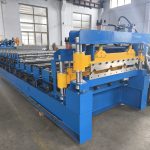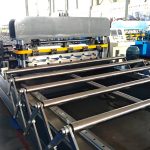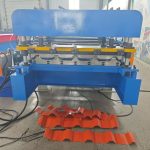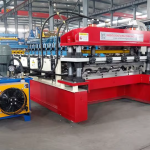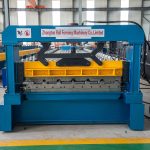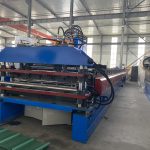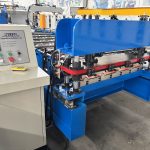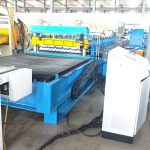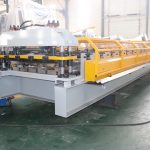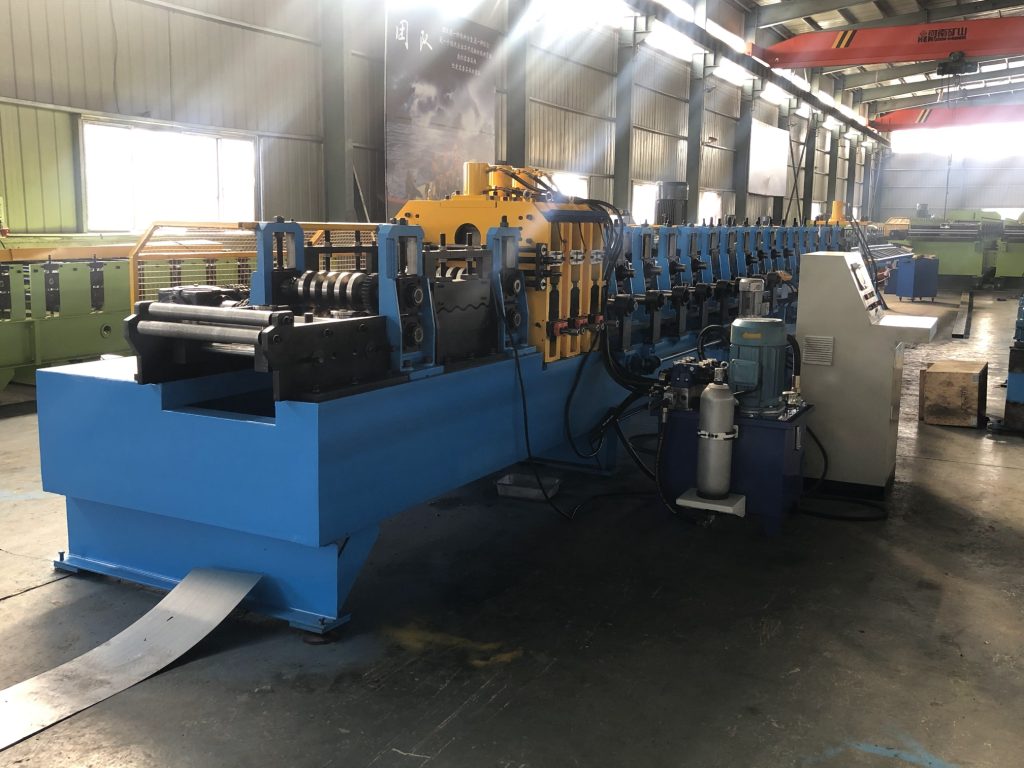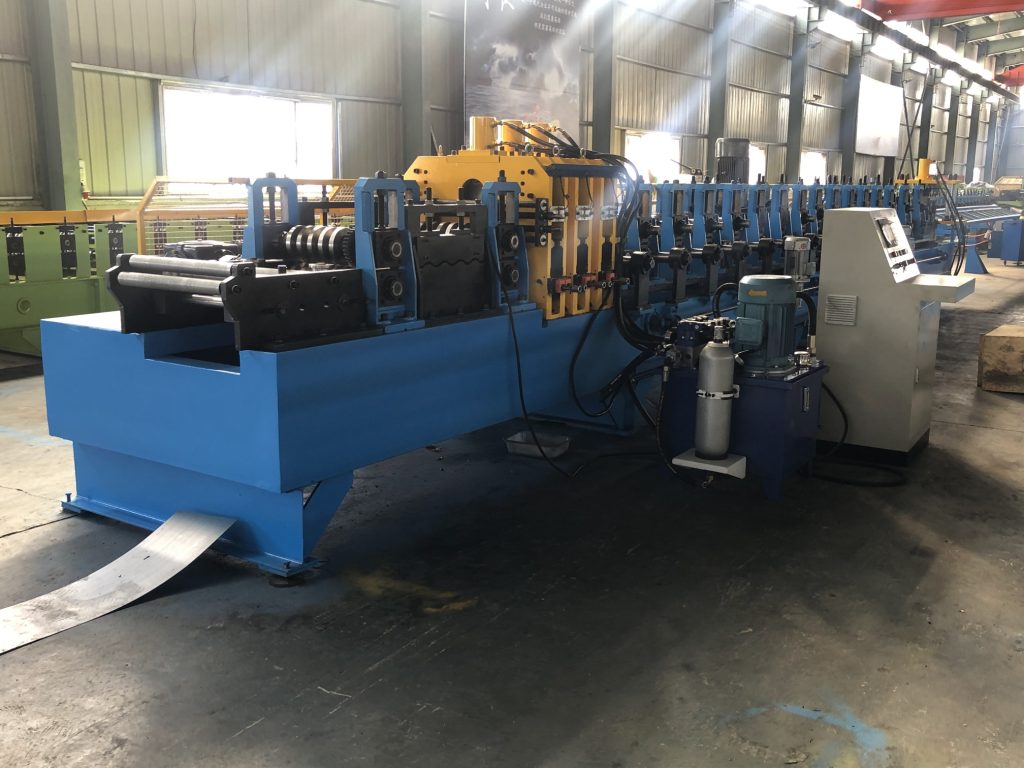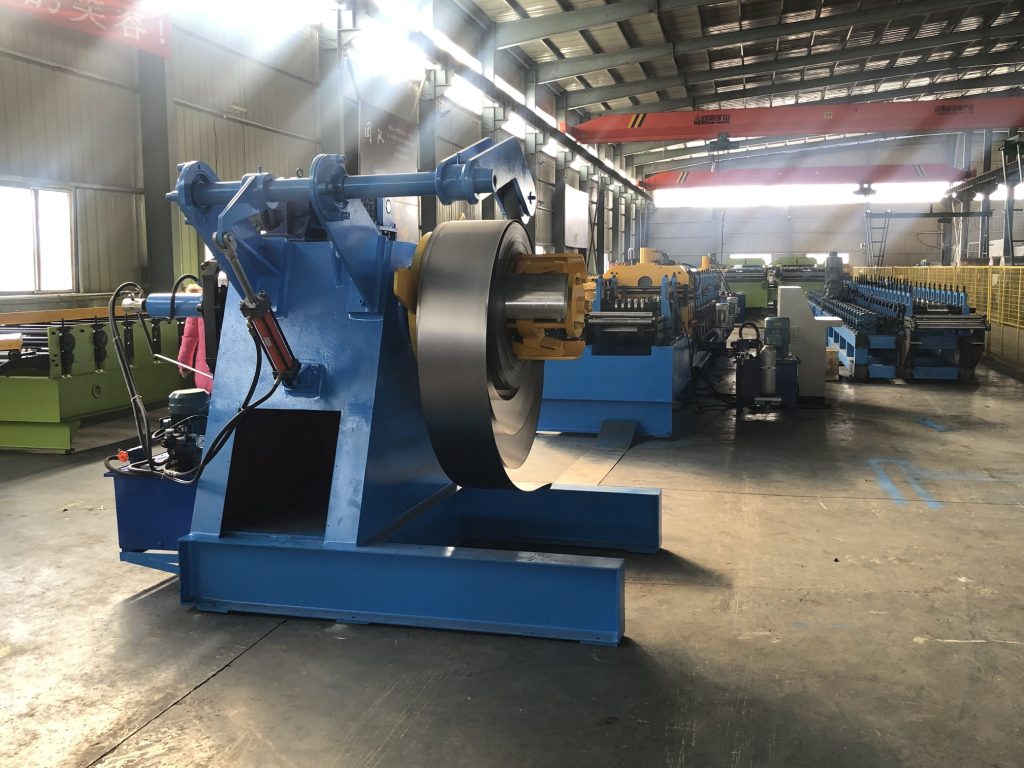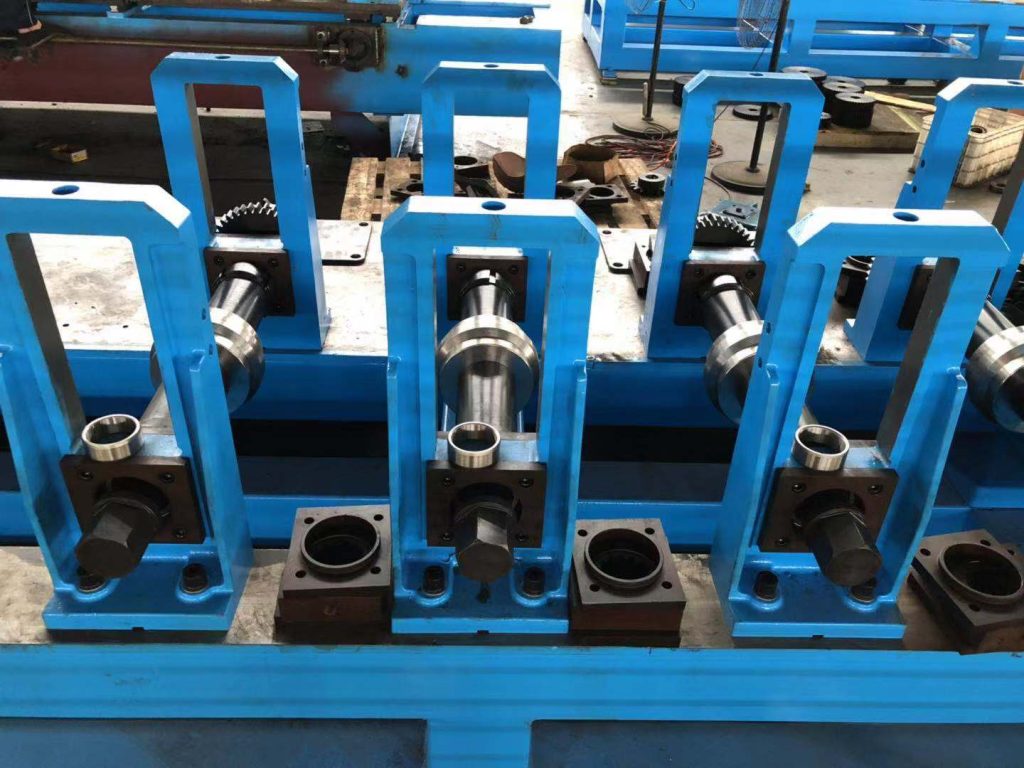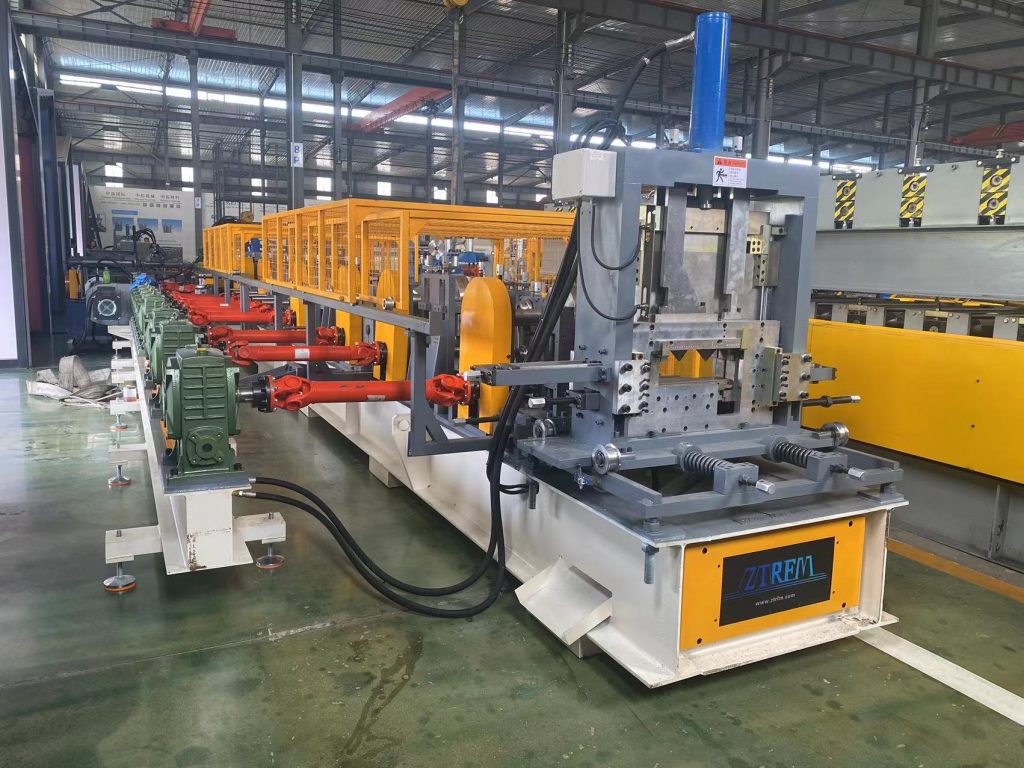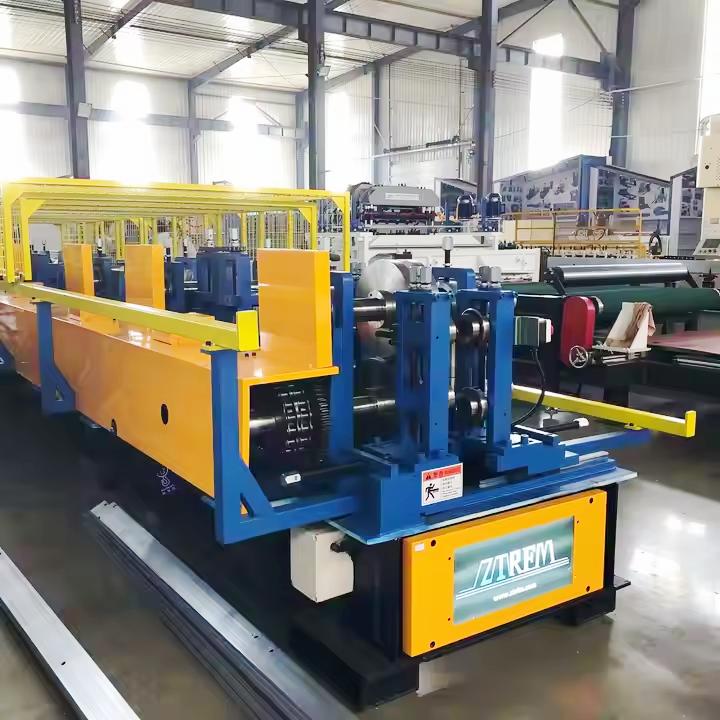Work flow of C purlin machine
https://www.youtube.com/watch?v=u4ewy__Y3LE
Overview of C Purlin and Its Forming Equipment
C purlin, a key component in light steel structures, is widely used in various industrial and civil buildings due to its excellent mechanical properties and ease of installation. The equipment dedicated to producing C purlin—known as the C purlin forming machine (or C purlin machine)—integrates advanced automation technology, enabling efficient and precise manufacturing of this essential structural material.
1. Characteristics and Applications of C Purlin
– Mechanical Performance: C purlin finished products, rolled by the C purlin machine, exhibit superior bending, compression, and tensile resistance. They also feature high flatness, ensuring stability in structural applications.
– Automation Advantages: The production process includes full-automatic fixed-length cutting and automatic punching, with operations simplified by an automatic flying saw for punching. This high automation reduces manual intervention and improves accuracy.
– Application Scenarios: As a primary load-bearing structure, purlin is widely used in large and medium-sized industrial and civil buildings, such as factory workshops, warehouses, locomotive depots, aircraft hangars, exhibition halls, theaters, stadiums, and market sheds—serving as roof load-bearing structures and wall supports.
2. Composition and Function of C Purlin Equipment
The C purlin machine is a single-roll forming unit that can produce multiple specifications of purlin with a single set of rolls. Its main components include:
– Passive loading frame (for feeding raw materials like steel plates or strips)
– Leveling device (to ensure the raw material is flat before forming)
– Punching device (for pre-punching holes as needed)
– Post-forming cutting device (for fixed-length cutting of finished products)
– Hydraulic station (providing power for forming and cutting)
– Computer control system (managing the entire production process for precision and automation).
Main roll forming machine
|
1.Formed Material
|
PPGI,GI,AI
|
Thickness:1.5-3mm
|
||
|
2.Decoiler
|
Hydraulic automatic decoiler
|
Manual decoiler(will give you as free)
|
||
|
3.Main body
|
Roller station
|
12 rows(As your requirement)
|
||
|
Diameter of shaft
|
80mm solid shaft
|
|||
|
Material of rollers
|
Gcr 15 with quenched teeatment
|
|||
|
Machine body frame
|
Metal steel welded
|
|||
|
Drive
|
Chain transmission
|
|||
|
Dimension(L*W*H)
|
9500*800*1200(customize)
|
|||
|
Weight
|
About 7T
|
|||
|
4.Cutter
|
Automatic
|
cr12mov material, no scratches, no deformation
|
||
|
5.Power
|
Motor Power
|
15KW
|
||
|
Hydraulic system power
|
5.5KW
|
|||
|
6.Voltage
|
380V 50Hz 3Phase
|
As your requirement
|
||
|
7.Control system
|
Electric Box
|
Customized(famous brand)
|
||
|
Language
|
English(Support multiple languages)
|
|||
|
PLC
|
Automatic production of the whole machine. Can set batch, length, quantity, etc.
|
|||
|
18.Forming Speed
|
60-70m/min(customized)
|
The speed depends on the shape of the tile and the thickness of the material.
|
||
3. Installation Methods and Construction Considerations for C Purlin Units
– Strip or Block Installation Method: This method involves completing most welding and splicing work on the ground, which enhances construction quality and reduces the need for assembly supports. By considering the capacity of on-site hoisting equipment during unit division, it maximizes the use of existing equipment, lowering costs related to hoisting rentals and machine transportation.
– Key Requirements: The method is applicable only if divided units have sufficient rigidity and geometric stability; otherwise, temporary reinforcement measures must be taken. Critical steps in construction include the accurate division of strips/blocks and careful handling during hoisting to ensure safety and precision.
4. Advantages in Cold-Formed Steel Production
C purlin machines play a vital role in cold-formed steel manufacturing. Cold-formed steel, made from cold-bent steel plates or strips, offers the following benefits via this equipment:
– Thin Wall Thickness: The machine can produce cold-formed steel with very thin walls, optimizing material usage.
– Efficient Production: It simplifies the manufacturing process, boosts production efficiency, and enables the creation of complex cross-sectional profiles with uniform wall thickness—shapes that are difficult to achieve via traditional hot rolling.
– Material Versatility: It supports the production of cold-formed steel from various materials, expanding application possibilities.
5. Additional Applications and Features of Automatic Machines
– Glazed Tile Production: Beyond C purlin, the machine functions as a hydraulic press in wet-process glazed tile production, shaping and pressing rough tile blanks after they are extruded and cut by a vacuum screw extruder.
– Lubrication System: Automatic C purlin machines are equipped with an automatic lubrication system that oils load-bearing bearings, transmission gears, and moving guide rails during operation, ensuring smooth running and extending equipment life.
– Flexible Operation: They can be used independently (with manual loading/unloading of blanks) or integrated into automated production lines—paired with automatic loading frames, unloading manipulators, extruders, tile cutters, and conveyors—to achieve fully automated tile blank production without manual intervention.
6. Manufacturing and Inspection of Welded Ball Joints for Purlin Units
Welded ball joints, a critical part of purlin units, are primarily manufactured via hot rolling (the most common method) or cold rolling. Strict production and inspection protocols ensure their structural integrity, contributing to the overall stability of the C purlin system.


